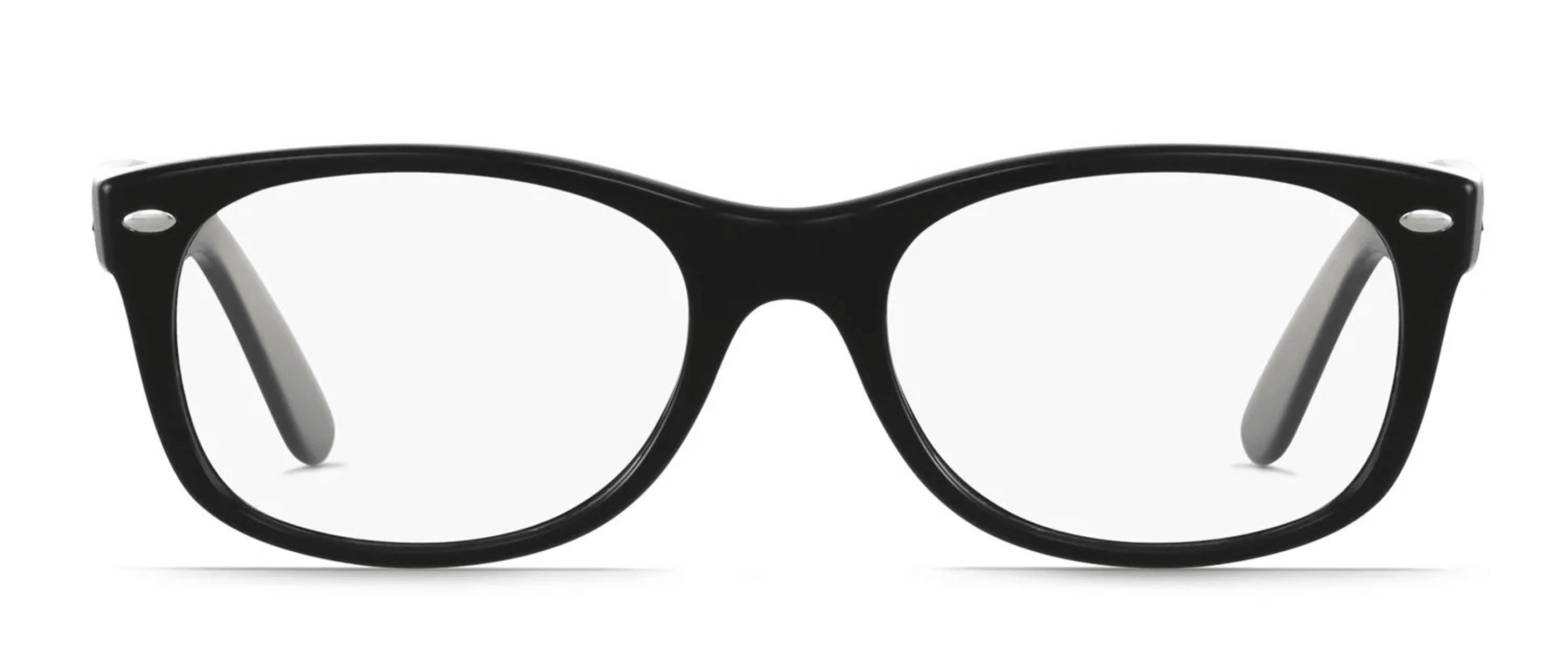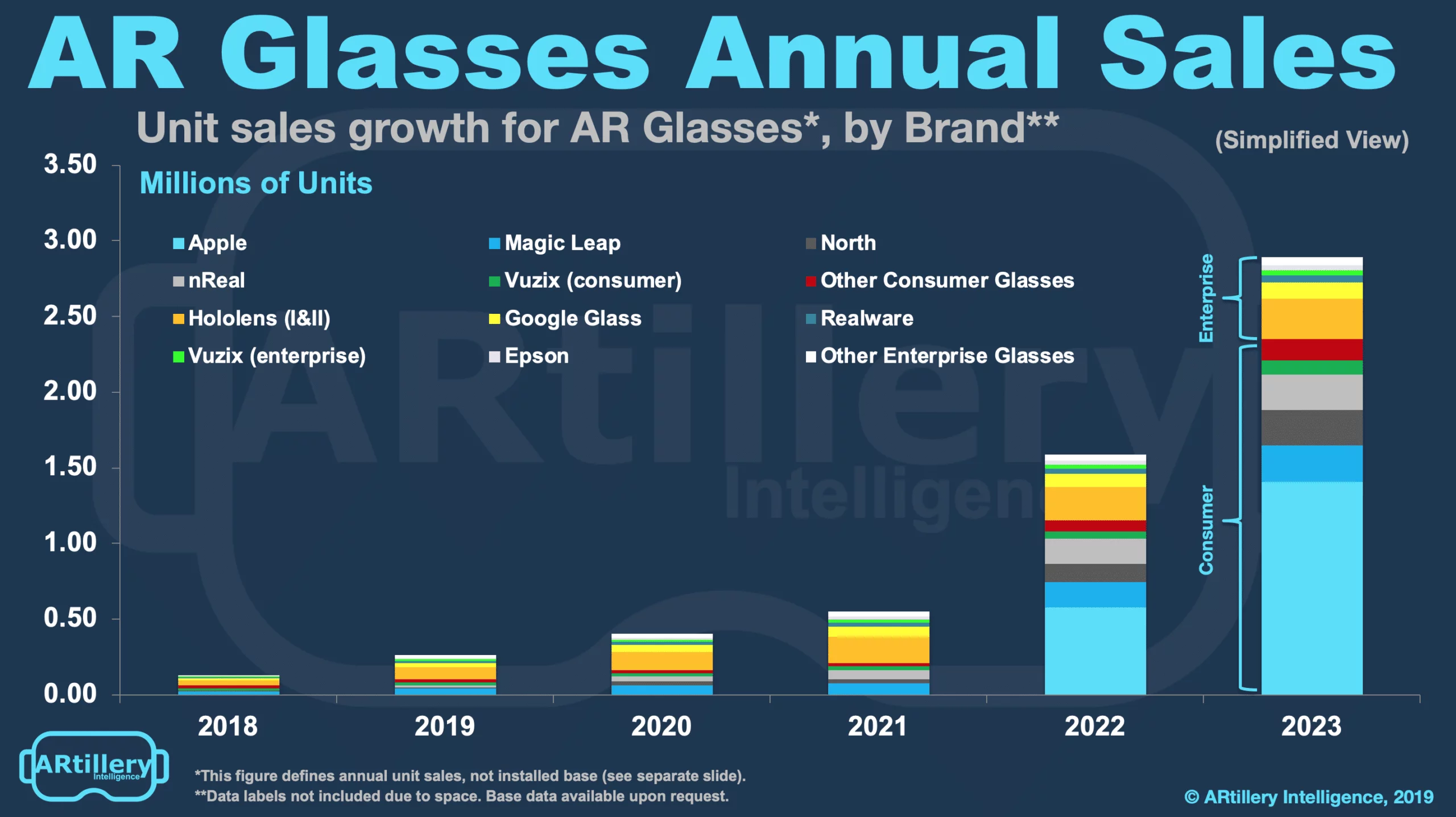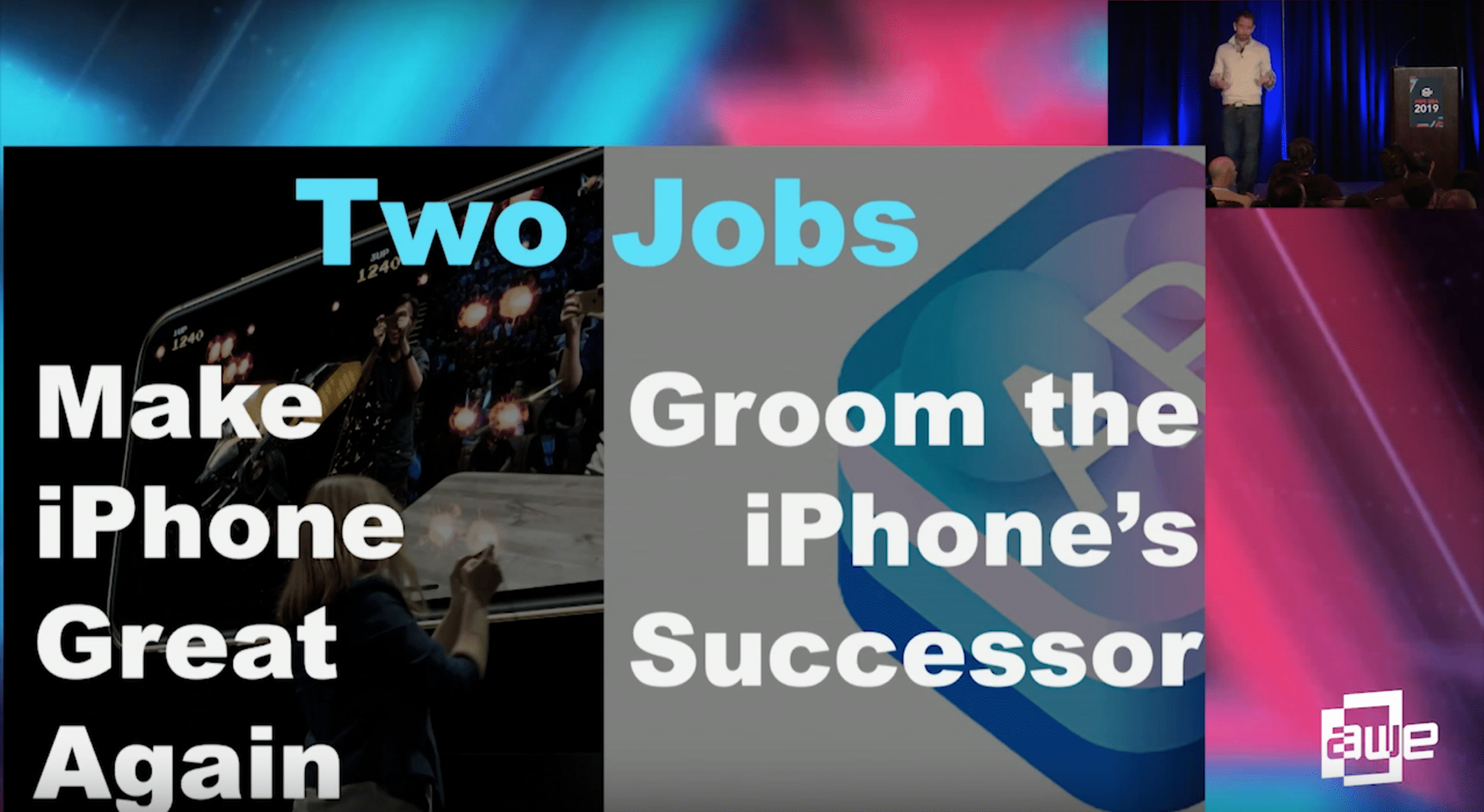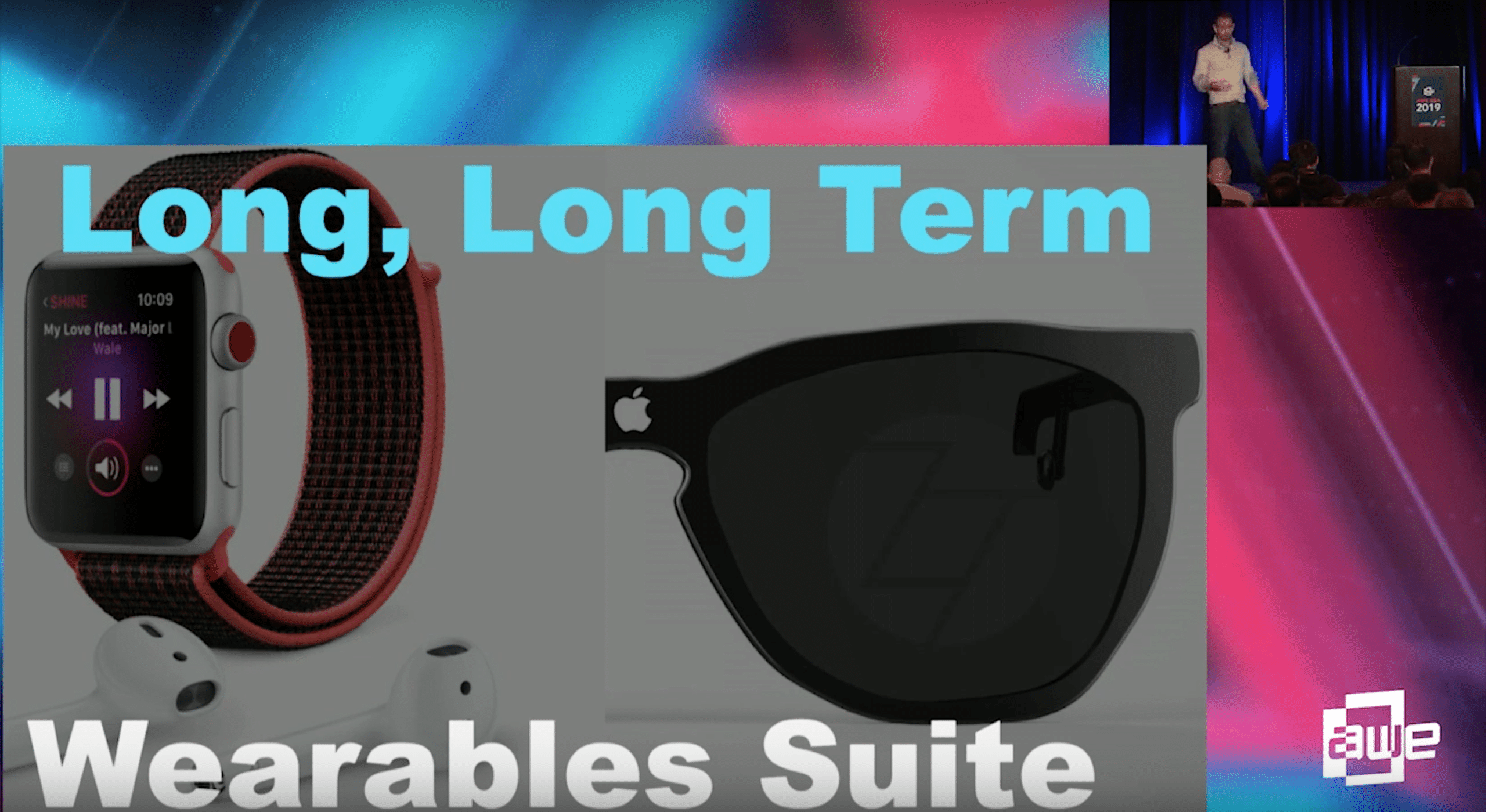
The AR world was dealt a blow last week when one of its most anticipated prospects was reported DOA: Apple’s rumored AR glasses. As you may know, the Taiwanese publication Digitimes reported that the program has been axed.
Several reasons would converge to form such an Apple decision. Before diving into those, we’ll acknowledge that this is unconfirmed info from the mostly-reliable Digitimes. But as a thought exercise, let’s pull that string. What are driving factors? And where would this leave us?

Halo Effect
Backing up for the sake of context, what are the rumored Apple Glasses? Based on a steady string of patent filings, acquisitions and reports, AR glasses have been rumored to be in design at Apple for a launch in the 2020 timeframe. It’s been a rallying cry for the AR industry.
We’ve been doubtful over the past few years that 2020 is realistic. We’ve based lots of projections — including that of our research arm ARtillery Intelligence — on a 2022 market entrance (see figures below) with a fall 2021 unveiling, as Apple’s product rollouts often go. More on that in a bit.
The reason these glasses would be important to AR include legitimacy, mainstream penetration and the “halo-effect” Apple often brings to any technology. After disappointing AR products (including ARkit apps) and consumer traction over the last two years, the sector needs a win.
So that brings us back to the DigiTimes report, and why an abandoned AR glasses program would be a blow to an embattled AR sector. The biggest questions at this point: What are Apple’s reasons? Is the program killed, or is it delayed? And what are potential outcomes?

Too Soon
First, what are the reasons Apple would kill an AR glasses program? Thought by some to flow from the high-profile departure of longtime design chief Jonny Ive, it would more likely result from Avi Bar Zeev’s May departure. The former Hololens architect was the apparent program lead.
Bigger reasons go back to our assertion that 2020 is too soon for consumer AR glasses. For one, the underlying technology isn’t there for a compelling-enough UX that also fits Apple’s high bar for style. Apple obviously has world-leading industrial design… but it can’t defy physics.
Apple is also rarely early to market, which 2020 certainly would be. Its product M.O. is to arrive late and outperform earlier entrants with superior design, mainstream appeal, marketing and supply-chain economies of scale. See: Mp3 players, smartphones, tablets… the list goes on.
This is all to say that the prospect of not seeing Apple glasses in 2020 doesn’t surprise us. If the DigiTimes report is true, it aligns with the above factors. It’s possible that the realities of underlying technology caught up with Apple, coupled with other factors we won’t claim to know.

Dead or Delayed?
But a bigger question — if the DigiTimes report is true — is if the program is dead or delayed. Putting AR glasses on ice would certainly align with the above timing issues, such as the state of the underlying technology and Apple’s fashionably late go-to-market playbook.
Another factor likewise suggests delay rather than death: money. As we’ve examined, the art of following financial motivations can reveal directional signals for tech giants’ AR moves. That’s especially true for AR’s role at Apple to both prop up and succeed an aging iPhone.
Given maturing smartphone sales and innovation cycles, AR has been tasked with making the iPhone sexy again and justifying premium pricing. At the same time, it will increase reliance on the iPhone — and thus its value — by shouldering compute needs of phone-tethered AR glasses.
Add it all up and there’s too much on the line for Apple to walk away from AR glasses. A supporting role to the iPhone could make AR glasses’ overall revenue impact in the tens of billions. Equally important, they could also prop up Apple’s next big play: a wearables suite.

In Character
AR glasses could be a key component in a wearables line (iWear?) that succeeds the iPhone as Apple’s cash cow. In concert with Airpods, Watch and others, it could augment several senses and comprise the ultimate personal computing touchpoint to our lives — classic Apple playbook.
This would fit the profile in a few ways. Just like we theorized how a 2020 release timeline is very un-Apple, AR Glasses’ eventual launch would carry a factor that’s very Apple: platform lock-in. A wearables suite could incentivize multi-device ownership through functional advantages.
That’s what Apple has done for years in pushing multiple interlocking devices (think: iPhone, iPad, Apple TV, Mac, etc). That works on micro levels with iTunes, iCloud and features like Continuity and Sidecar. And it works on macro levels in terms of lifestyle branding for Apple device owners.
For Apple itself, these are all roads to greater revenue per user (ARPU), and there’s nothing wrong with that. The point is that this same playbook may define Apple glasses’ eventual target as part of a comprehensive wearables line that succeeds the current suite of rectangular iThings.
But the 2020 dream may be fading. It would have been a boon to the AR sector (and this publication), along with cute marketing for Apple (20/20 vision). But practical realities point to — with or without the DigiTimes report — a later market arrival for AR glasses from Cupertino.
For deeper XR data and intelligence, join ARtillery PRO and subscribe to the free AR Insider Weekly newsletter.
Disclosure: AR Insider has no financial stake in the companies mentioned in this post, nor received payment for its production. Disclosure and ethics policy can be seen here.
Header Image Credit: Apple, Inc.
